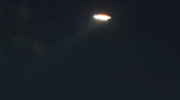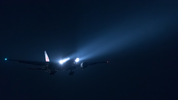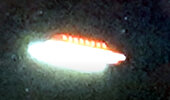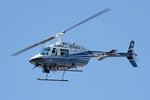DaveC426913
Valued Senior Member
This is another case study of a UAP incident that I hope can serve as a little microcosm of how (amateur) analysis can be done on a given incident for interested, but apolitical, readers.
If you are interested in a longer, yet much more ... umm ... circuitous ... analysis, it was first posted in the main UAP thread, here.
Please note: This (these) case studies are intended to concentrate on analysis of the incident - what can and can't be logically deduced from the facts present. Rhetoric, politicking and meta-arguments will be strongly discouraged.
This is a video of a man who caught something he can't explain while shooting the night sky over his house. He's subsequently recorded his analysis of his photo images, along with his daughters. It is a fun and entertaining watch (not in a facetious way - but because of his enthusiasm and the adorable antics of his daughters).
A few housekeeping items - we would be remiss in our job if we did not address these:
There is no reason to think anything about this is faked/altered/hoaxed. (It's not that it couldn't have been; its that this incident can be so easily resolved, we don't even need to explore it.)
There is also no reason to think he is being dishonest. The bulk of his account is his pictures, so there is really nothing to be dishonest about.
The context:
Witness was outside in his yard, with his camera set up, pointing over the roof of his house. He was attempting to get pictures of the Milky Way.
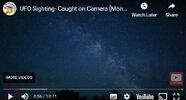
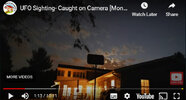
He captured several (six) frames of the object, moving right to left, in the sky over his house.
This is a composite I made from screenshots of his video
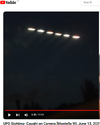
If you are interested in a longer, yet much more ... umm ... circuitous ... analysis, it was first posted in the main UAP thread, here.
Please note: This (these) case studies are intended to concentrate on analysis of the incident - what can and can't be logically deduced from the facts present. Rhetoric, politicking and meta-arguments will be strongly discouraged.
This is a video of a man who caught something he can't explain while shooting the night sky over his house. He's subsequently recorded his analysis of his photo images, along with his daughters. It is a fun and entertaining watch (not in a facetious way - but because of his enthusiasm and the adorable antics of his daughters).
A few housekeeping items - we would be remiss in our job if we did not address these:
There is no reason to think anything about this is faked/altered/hoaxed. (It's not that it couldn't have been; its that this incident can be so easily resolved, we don't even need to explore it.)
There is also no reason to think he is being dishonest. The bulk of his account is his pictures, so there is really nothing to be dishonest about.
The context:
Witness was outside in his yard, with his camera set up, pointing over the roof of his house. He was attempting to get pictures of the Milky Way.


He captured several (six) frames of the object, moving right to left, in the sky over his house.
This is a composite I made from screenshots of his video

Last edited:

